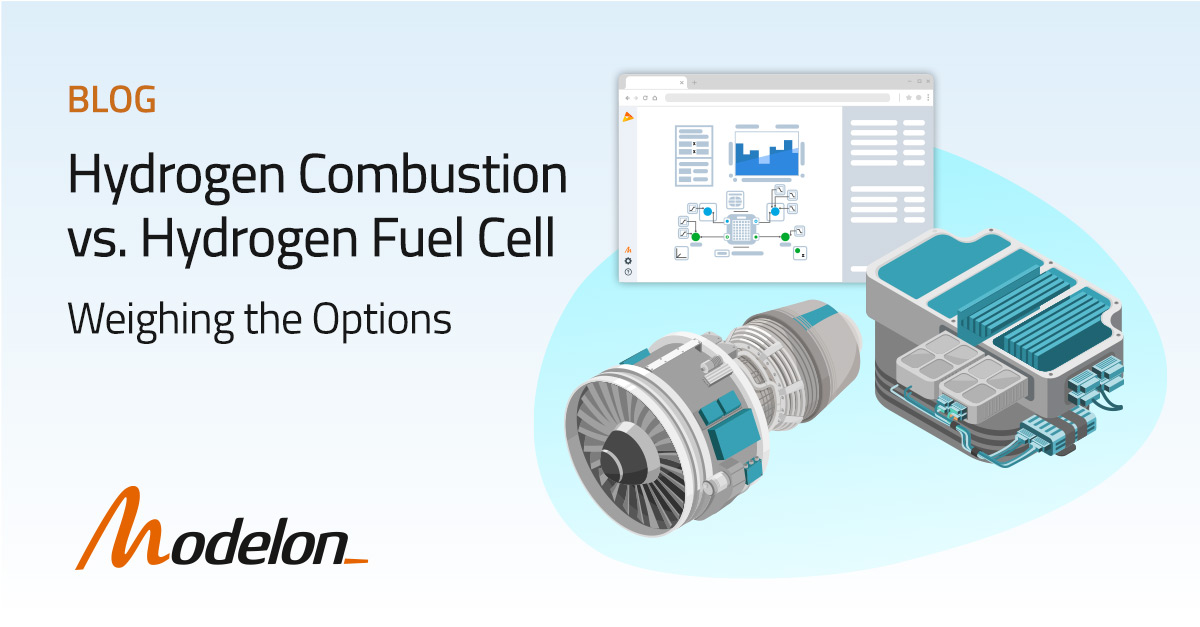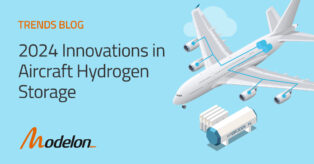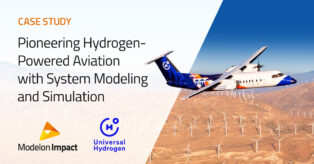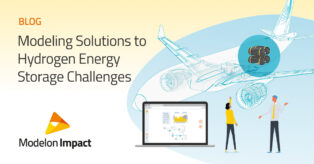Hydrogen Combustion vs. Hydrogen Fuel Cell: Weighing the Options

Aviation is vital to how the modern world works. As such, it’s no surprise that aviation’s carbon footprint has grown faster in recent decades than rail, road, or shipping. For example, in 2019, domestic and international aviation accounted for around 8 percent of the UK’s CO2 equivalent emissions. According to Britain’s Aerospace Technology Institute (ATI), the UK’s aviation sector is currently on course to account for roughly 39 percent of the UK’s CO2 emissions by 2050. This is distressing because 2050 is also the deadline many nations have set to reduce their aviation-related emissions to net zero.
In early 2021, FlyZero (an independent group formed by ATI, consisting of experts from across the UK aerospace industry) was tasked with finding alternatives to fossil fuels. They considered various options, including ammonia, hydrogen combustion, hydrogen fuel cells, and battery-electric.
“From an emissions point of view, batteries are a better solution,” according to FlyZero’s Chief Engineer of Aircraft Integration, David Debney. “But the technology is just nowhere near getting to a commercial aircraft anytime soon because of the amount of power and energy that you can get in a battery at the moment.”
FlyZero ultimately settled on hydrogen (specifically “green” cryogenic hydrogen). They’ve developed several aircraft concepts that meet conventional airline uses regarding passenger capacity and range.
However, identifying viable solutions is only the first step. While hydrogen offers two promising paths for aviation—as either fuel cell electric or combustion engine vehicles—each has issues.
Hydrogen Combustion vs. Hydrogen Fuel Cell
Michael Sielemann is the Aerospace Industry Director at Modelon, a leading modeling and simulation solutions provider for aerospace, automotive, energy, and academia. When asked about which hydrogen technology is most promising for aircraft, Sielemann is judicious.
“It depends a bit on who you talk to,” he admits. “If you take an established aircraft manufacturer and are talking about the next 10 to 15 years, they will favor using gas turbines. That is, internal combustion engines burning hydrogen, with a slow phase-in of new fuel cell-based passenger planes in maybe 20 years.”
Meanwhile, newer entrants are more committed to making fuel cells a reality today. Sielemann points to Universal Hydrogen, a Modelon client. Last year, Universal Hydrogen had several successful test flights of a 40-seat De Havilland Dash 8-300 turboprop powered by hydrogen fuel cells.
“I think the fuel cell approach is super convincing,” Sielemann says. Not only have we seen many persuasive demonstrations of hydrogen fuel cell viability in the past year, but it’s also a very complete solution in terms of addressing climate change. Fuel cells eliminate carbon emissions without replacing them with nitrous oxides (NOx) or problematic quantities of water vapor. (Both are issues with current hydrogen combustion solutions.)
“It’s more difficult to use fuel cells,” Sielemann concedes. This is where many aircraft manufacturers, suppliers, and start-ups rely on multi-fidelity models and simulation-based design to quickly test the feasibility of a given approach.
Weighing Options for Sustainability and Functionality
It’s well established that fuel cells are limited by their relatively low energy density compared to other fuel sources.
“Right now, there is a lot of debate about how big the aircraft can be if you want to use the fuel cells,” Sielemann says. “People think it’s probably just going to work out up to a certain size, maybe 100, 150, 200 passengers, based on who you ask and their agenda.”
However, there are also other challenges, such as thermal management.
According to Sielemann, “If you have a gas turbine, the gas turbine has much air going through it anyway. So if there is excess heat that the engine generates that you’re not converting into thrust, the air takes it away. That’s no issue. But you don’t have this huge airflow going through the fuel cell. So you need to make up your mind on how to handle heat.”
Modelon Impact (Modelon’s cloud-native simulation modeling and collaboration platform) is already helping aircraft engineers streamline their design processes and iterate through potential solutions to find the most promising options.
“In my view,” Sielemann concludes, “it’s super exciting. Yes, fuel cell technology for aviation has its challenges. But engineering-wise, this is pretty close to being convincing. There is, of course, stuff that still needs to be worked on. But given the timeline for reducing carbon emissions, if we don’t work quickly to find these solutions … well—that will be hard for the world.”
Need help simulating and modeling hydrogen systems so you can quickly test the best designs? Modelon’s experts are here to help you and your team move forward.



